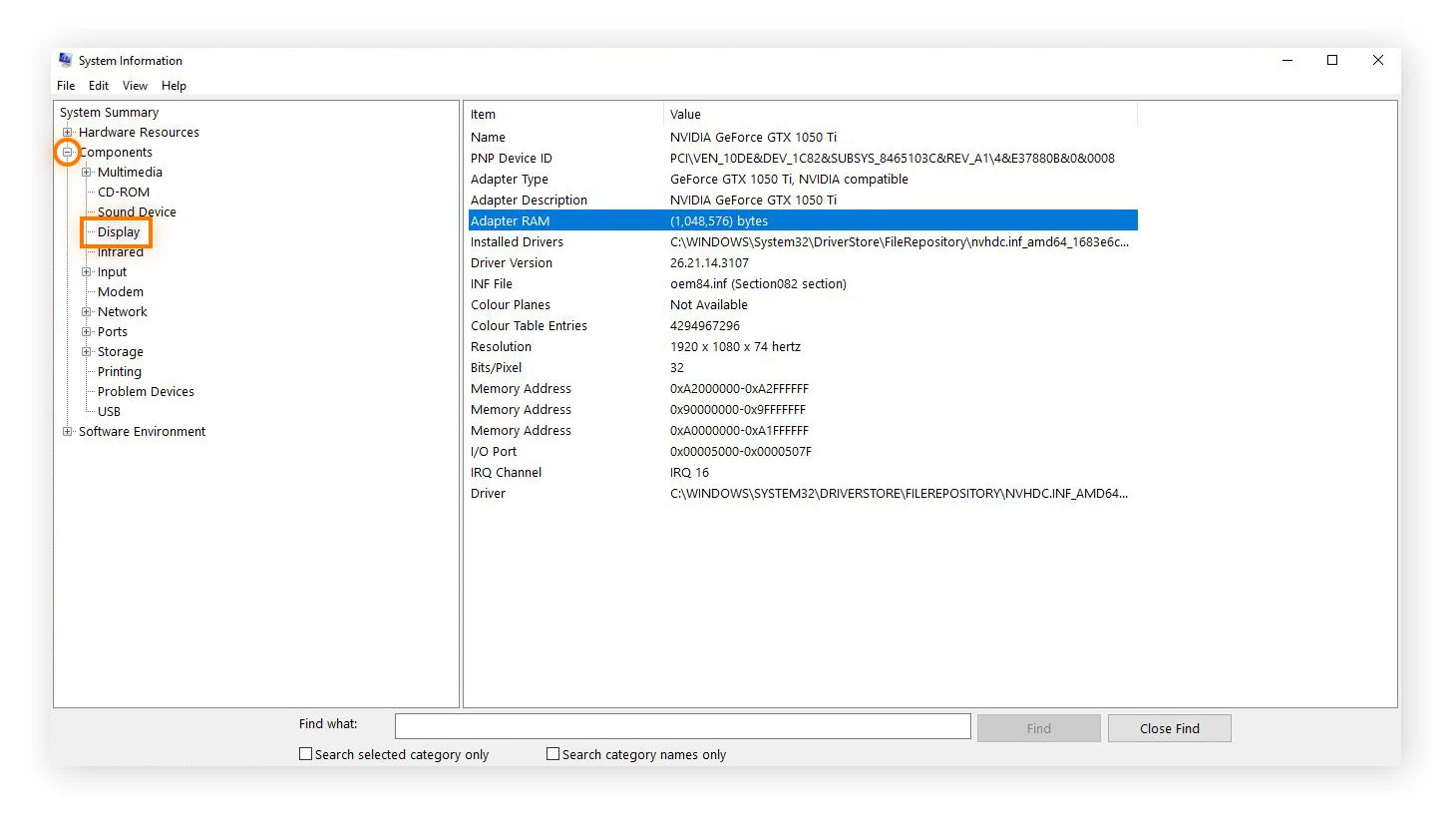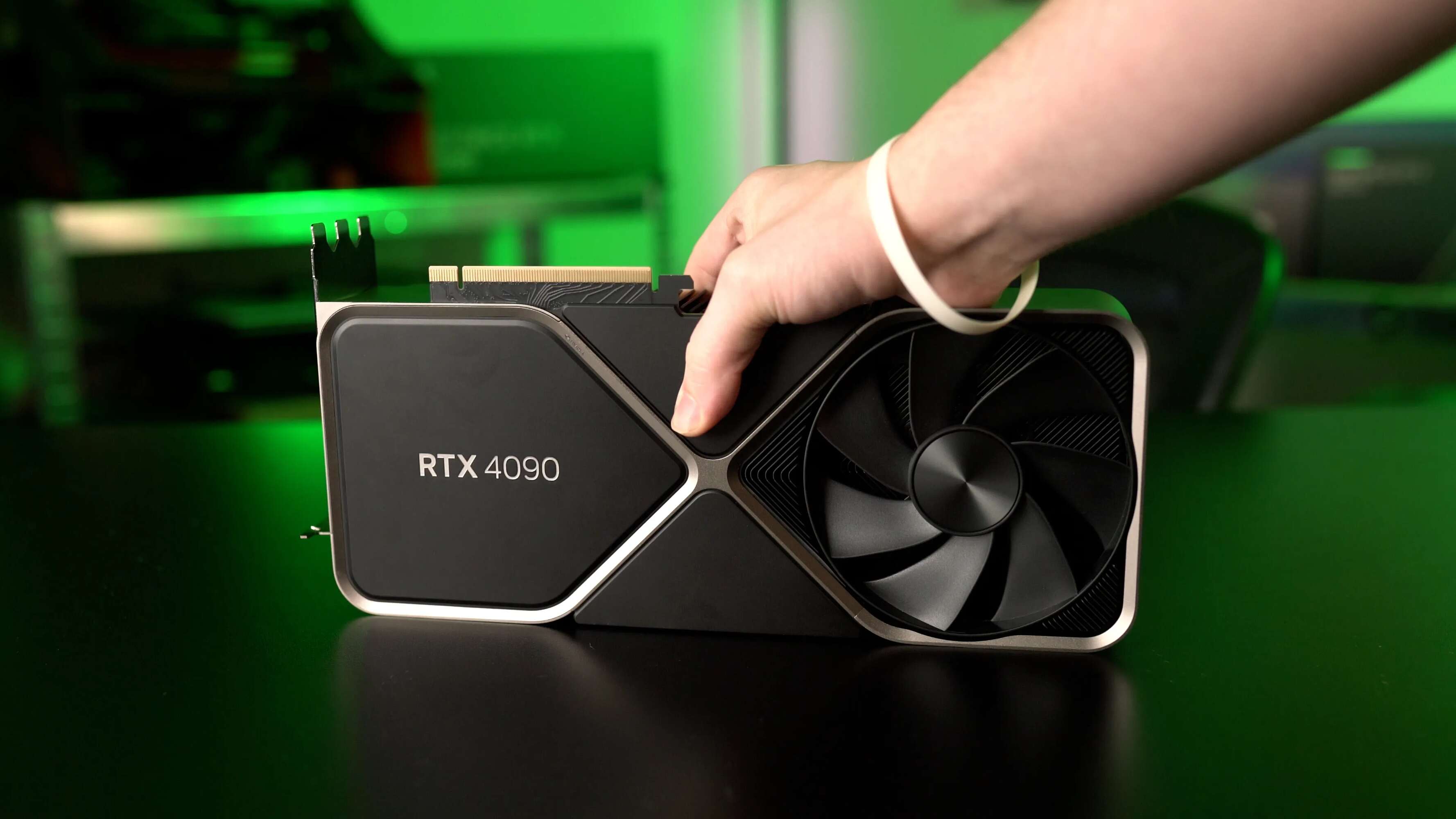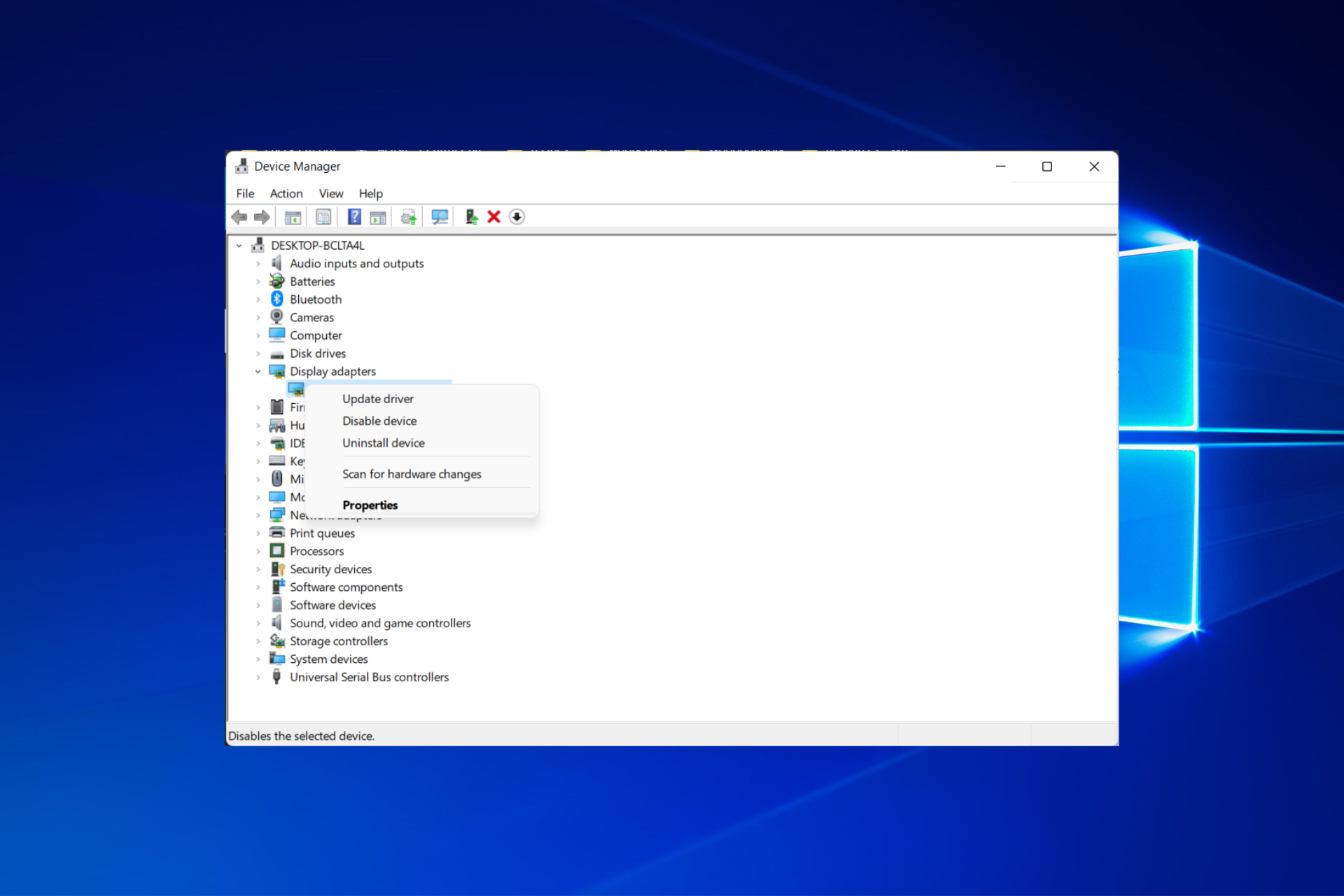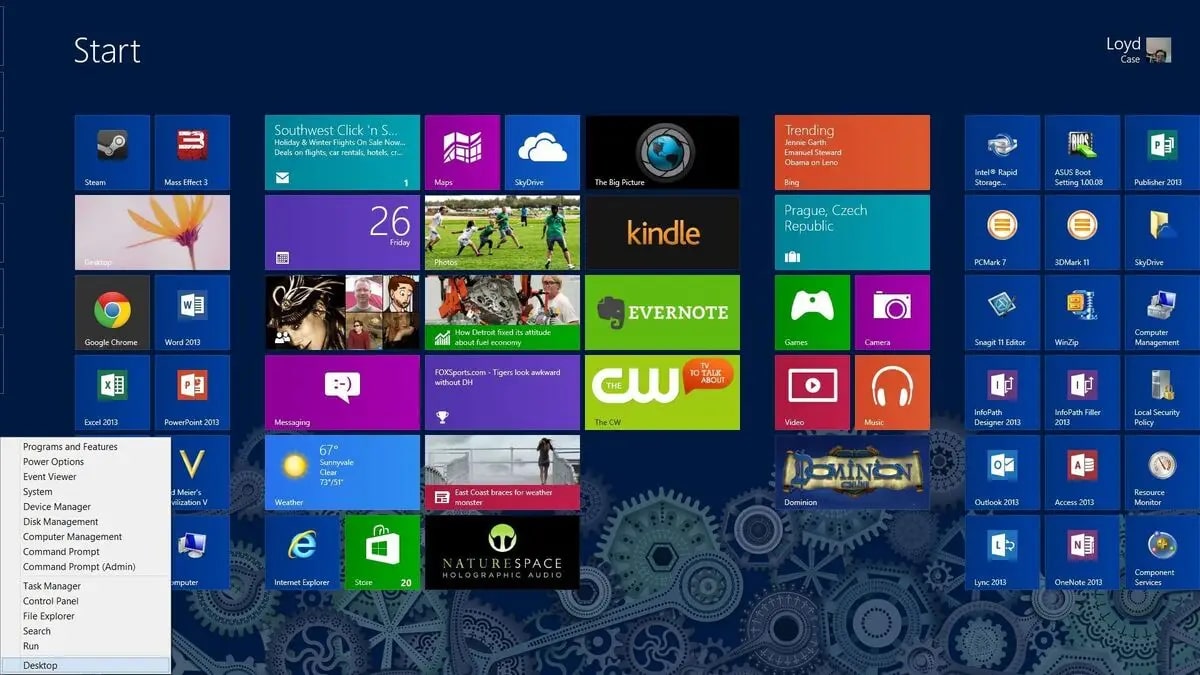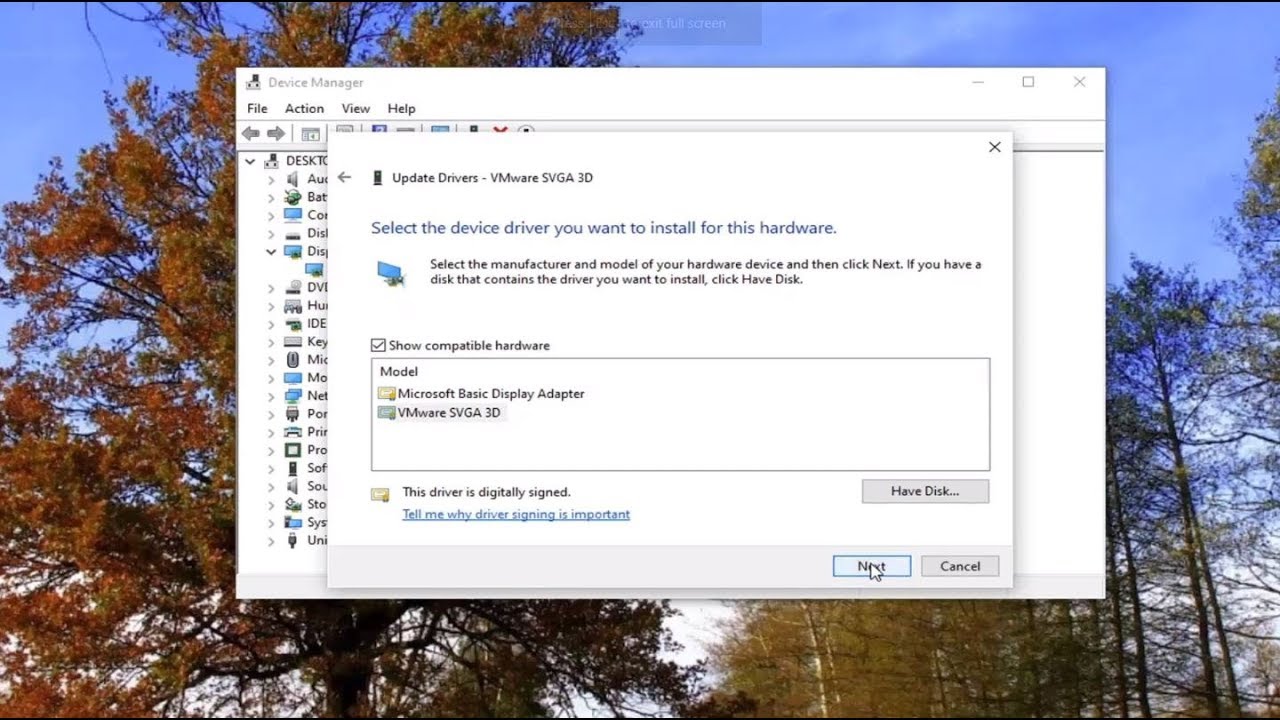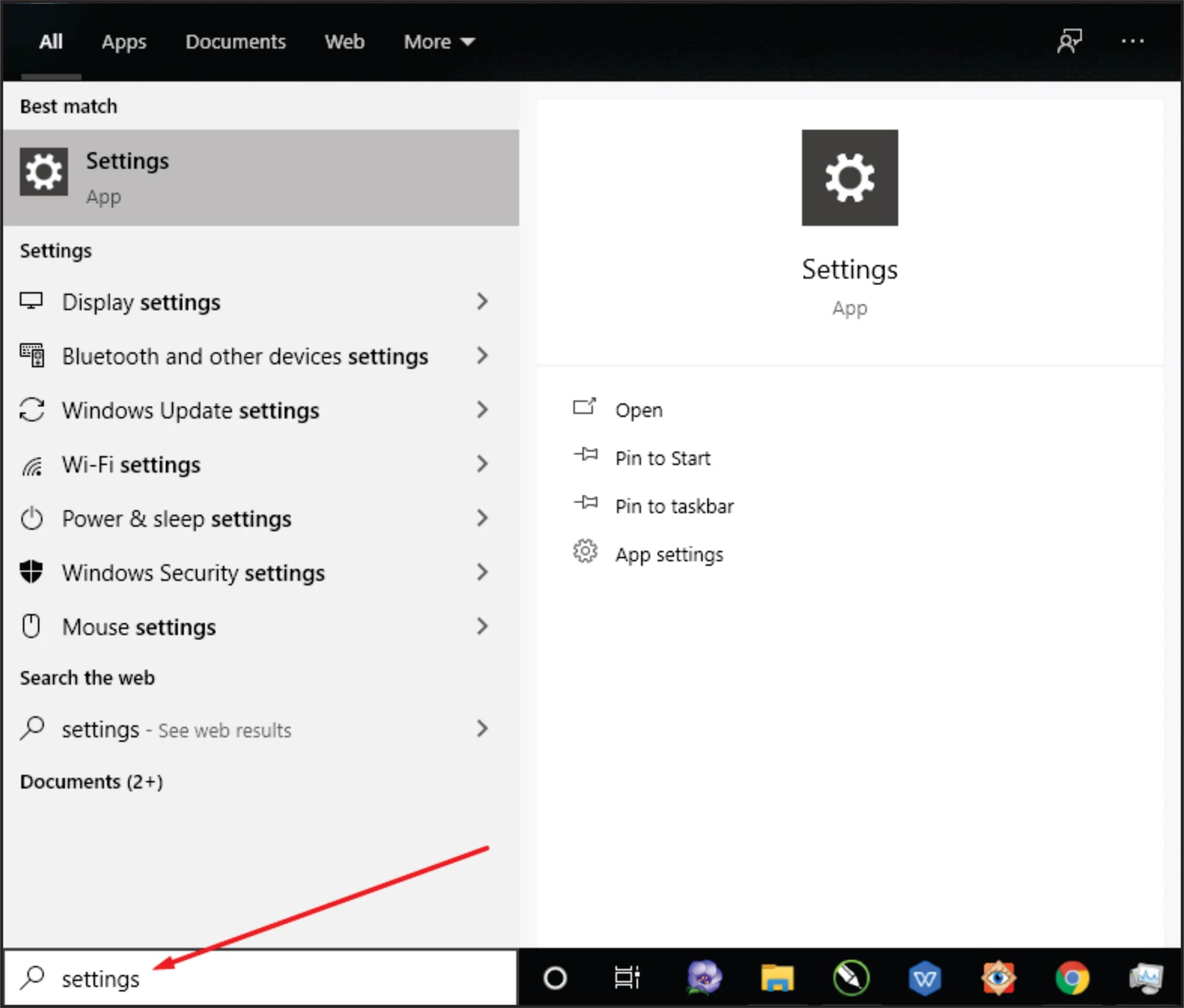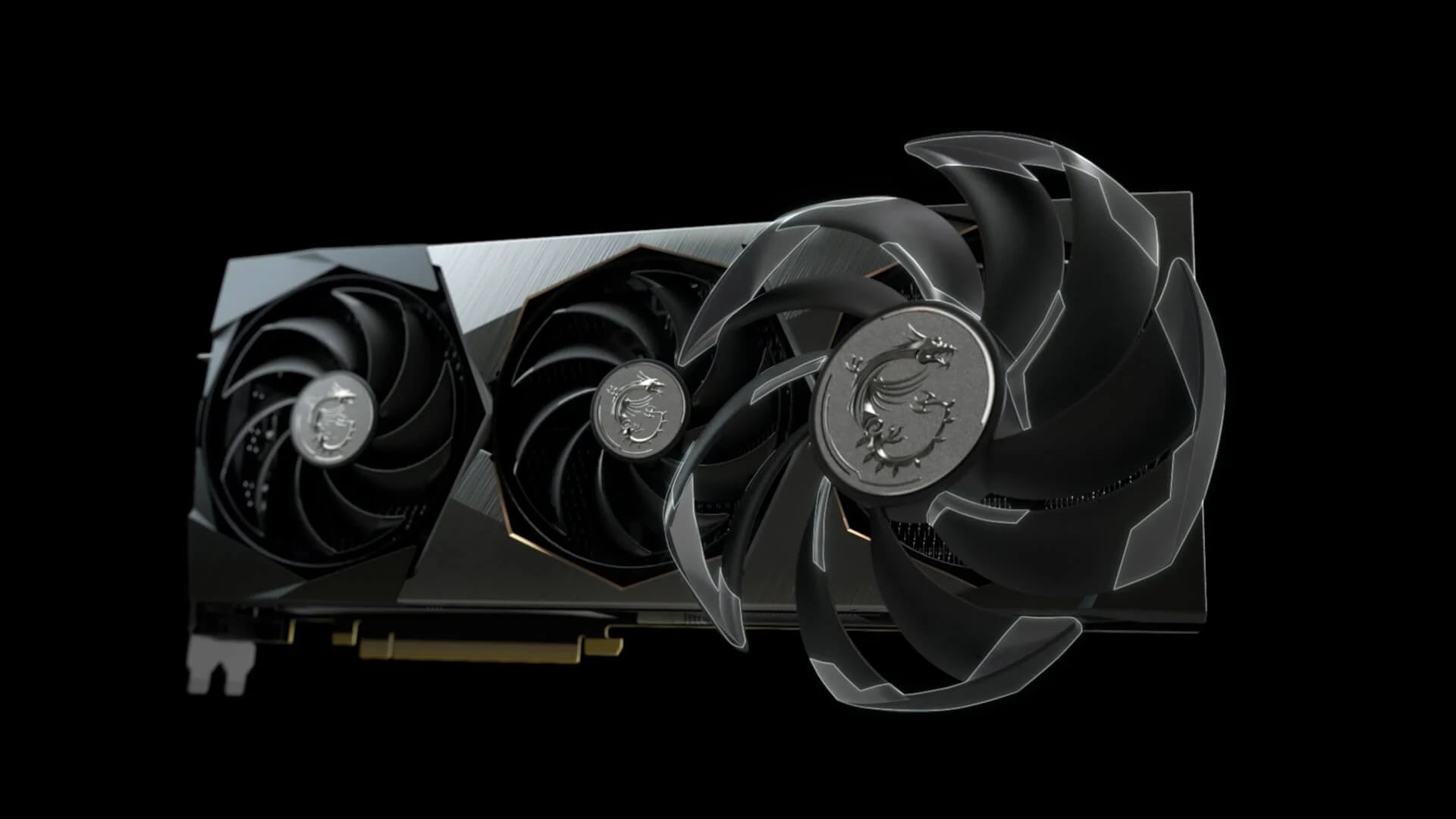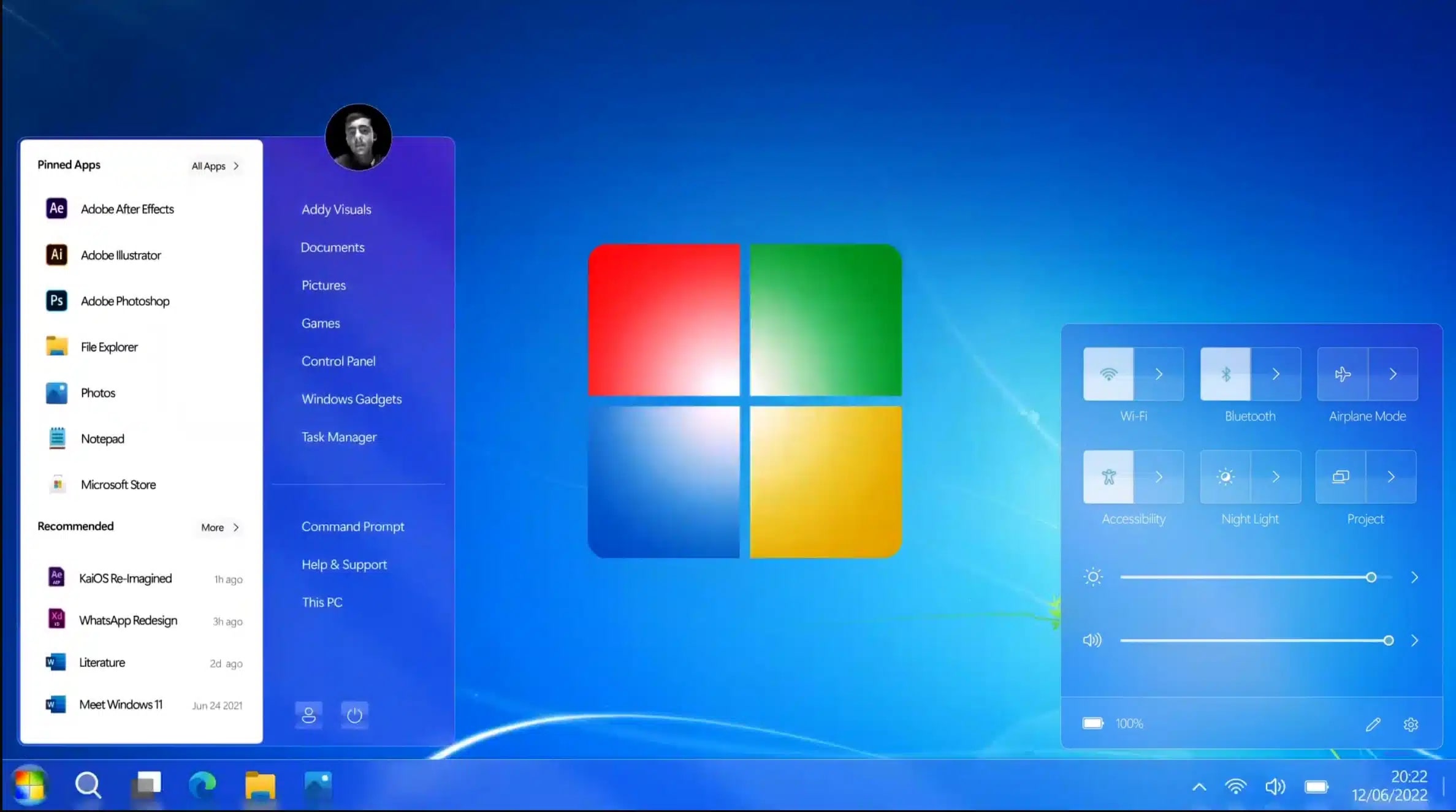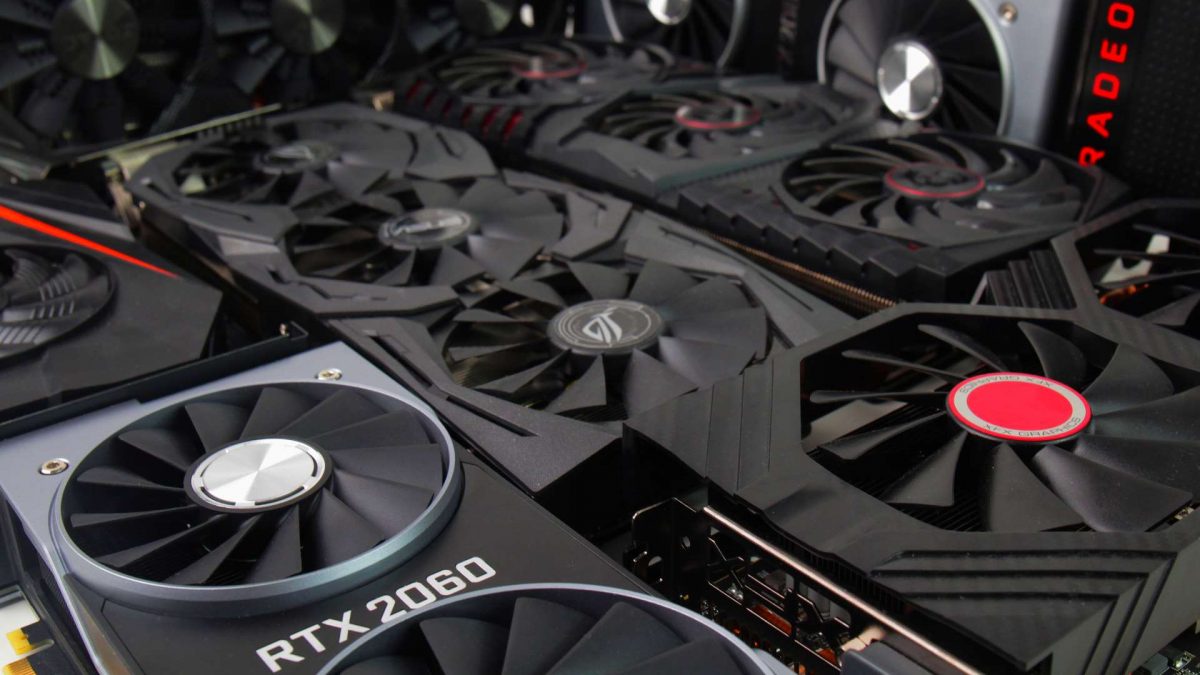Overview
Knowing the specifications of your graphics card is essential for a variety of reasons, whether you are a gamer, a graphics designer, or simply curious about your computer’s hardware. Your graphics card determines the quality of graphics and visuals you can experience on your device, so having the correct information is crucial to ensure optimal performance and compatibility.
In this article, we will guide you through the various methods to find out your graphics card on different operating systems, including Windows, Mac, Linux, Chromebook, iOS, and Android. You can choose the method that corresponds to your device and operating system to easily obtain the necessary details about your graphics card.
It’s worth mentioning that while the locations and steps may vary slightly depending on your specific device and operating system version, the general principles outlined in this article should be applicable to most scenarios.
So, whether you’re looking to upgrade your graphics card, troubleshoot a technical issue, or simply satisfy your curiosity, let’s dive into the different methods of finding out your graphics card!
Checking Graphics Card on Windows
If you’re using a Windows operating system, there are multiple ways to check your graphics card details. Here are three common methods:
- Through System Information: Press the Windows key + R to open the Run dialog box. Type “msinfo32” and press Enter. In the System Information window, expand the Components section and click on Display. You will find detailed information about your graphics card under the Name and Adapter RAM fields.
- Through Device Manager: Right-click the Start button and select Device Manager from the menu. In the Device Manager window, expand the Display adapters section. You’ll see the name of your graphics card listed here. Right-click on it and select Properties to access even more information about your card.
- Through Command Prompt: Open the Command Prompt by pressing the Windows key + R, typing “cmd”, and pressing Enter. In the Command Prompt window, type “dxdiag” and press Enter. This will launch the DirectX Diagnostic Tool. In the Display tab, you’ll find your graphics card information, including the name, manufacturer, and current driver version.
Regardless of which method you use, you’ll be able to identify your graphics card model, manufacturer, and other relevant details. These pieces of information can be helpful for troubleshooting issues, updating drivers, or ensuring compatibility with certain software or games.
Now that you know how to check your graphics card details on Windows, let’s explore how to find this information on other systems.
Checking Graphics Card on Mac
For Mac users, finding information about your graphics card is a straightforward process. Here’s how you can check your graphics card details on a Mac:
- Through About This Mac: Click on the Apple menu in the top-left corner of your screen and select About This Mac. In the Overview tab, you’ll see your Mac’s basic information. Click on the System Report button, which will open the System Information window. In the sidebar, select Graphics/Displays, and you’ll find detailed information about your graphics card.
- Through System Profiler: Go to the Applications folder, then open the Utilities folder. Next, launch System Profiler. In the left sidebar, select Graphics/Displays, and you’ll see the information about your graphics card on the right side of the window.
In both methods, you’ll be able to view the graphics card model, graphics memory, vendor information, and more. This information can be useful when determining if your graphics card meets the requirements of specific software, games, or applications.
By knowing the details about your Mac’s graphics card, you can ensure smooth operation and make informed decisions regarding software updates, upgrades, or compatibility issues.
Now that you know how to check your graphics card details on a Mac, let’s move on to the next section, where we’ll explore how to find this information on Linux systems.
Checking Graphics Card on Linux
Linux offers a variety of methods to find information about your graphics card. Here are a few ways to check your graphics card details on a Linux-based system:
- Through the Command Line: Open a terminal window and use the following command:
lspci -k | grep -A 2 -E "(VGA|3D)". This will display the details of your graphics card, including the model, vendor, and driver used. - Through System Tools: Different Linux distributions have system tools that provide information about hardware. For example, you can use the “System Profiler and Benchmark” tool in Ubuntu or the “HardInfo” application in Fedora to find the details of your graphics card.
- Through the Graphics Control Panel: Some Linux distributions, such as Ubuntu and Linux Mint, offer a graphics control panel that allows you to view and configure the graphics settings. Within the control panel, you can find information about your graphics card.
By using these methods, you can identify the graphics card model, vendor, driver, and other relevant details. This information is valuable for troubleshooting graphics-related issues, installing the correct drivers, or ensuring compatibility with specific software or games.
Linux provides flexibility and customization options, and knowing your graphics card details can help you harness its full potential. Now that you can check your graphics card on Linux, let’s move on to the next section where we’ll explore how to find this information on a Chromebook.
Checking Graphics Card on Chromebook
Chromebooks are known for their simplified interface and streamlined operating system. While Chrome OS may not provide explicit access to detailed hardware information, you can still find some basic graphics card details by following these steps:
- Through the Chrome OS Settings: Click on the clock in the bottom-right corner of the screen, then select the gear icon to access the Settings menu. In the left sidebar, choose “About Chrome OS”. Here, you’ll find information about your Chromebook model and Chrome OS version. While it may not directly mention the graphics card, it can give you an idea of the hardware capabilities.
- Through the Crosh Command Shell: Press the Ctrl + Alt + T keys simultaneously to open the Crosh command shell. Type “
system_profiler” and hit Enter. This command will display system information, including details about the graphics card. However, be cautious as the access and options may vary depending on the Chromebook model and Chrome OS version.
Chromebooks are primarily designed for web-based tasks and may not provide as much customization or detailed hardware information compared to other operating systems. However, these methods should give you a general idea of your Chromebook’s hardware, including the graphics capabilities.
Now that you know how to check graphics card details on a Chromebook, let’s move on to the next section where we’ll explore how to find this information on an iOS device.
Checking Graphics Card on iOS
On iOS devices, such as iPhones and iPads, the graphics card is integrated into the device’s chipset. While you can’t access specific graphics card details like on a traditional computer, you can still gather some information about the graphics capabilities of your iOS device by following these steps:
- Through the Settings App: Open the Settings app on your iOS device. Scroll down and tap on “General”, then select “About”. Here, you’ll find information about your device, including the model name and general specifications. While it may not provide explicit information about the graphics card, it can give you an indication of the device’s performance and capabilities.
- Through Third-Party Apps: There are several third-party apps available on the App Store that can provide detailed system information, including graphics card details. Apps like “CPU Identifier” and “Lirum Device Info Lite” can display hardware information, including the graphics chipset and other relevant details for your iOS device.
While you may not have direct access to detailed graphics card information on iOS devices, these methods can help you understand the overall capability of your device’s graphics performance. This information can be particularly useful when choosing apps or games that require specific graphical capabilities.
With the limited customization options on iOS, checking graphics card details may not be as extensive as on other platforms. However, these methods should provide you with a basic understanding of your iOS device’s graphics capabilities.
Now that you know how to check graphics card details on iOS, let’s move on to the next section where we’ll explore how to find this information on an Android device.
Checking Graphics Card on Android
Android devices offer multiple methods to check the graphics card details and hardware information. Here are a few ways to find out your graphics card information on an Android device:
- Through Settings: Open the Settings app on your Android device. Scroll down and select “About phone” or “About device”. Look for the “Hardware information” or similar section. Here, you’ll find details about your device’s specifications, including the graphics card or GPU (Graphics Processing Unit) information.
- Through Third-Party Apps: There are several third-party apps available on the Google Play Store that can provide detailed system information, including the graphics card details of your Android device. Apps like “CPU-Z” and “AIDA64” are popular choices that display comprehensive hardware information, including the GPU model and other relevant details.
By using these methods, you can access valuable information about your Android device’s graphics card. This includes details such as the GPU model, graphics memory, clock speed, and more. This information can assist you in understanding the graphical capabilities of your device and making informed decisions when it comes to running demanding applications or games.
It’s important to note that the availability and accessibility of certain information may depend on the device manufacturer and Android version. The given methods should work on most Android devices, but the specific terminology and options may vary.
Now that you know how to check graphics card details on an Android device, let’s move on to the next section where we’ll explore how to find this information through system tools, regardless of the operating system used.
Checking Graphics Card Through System Information
One common method to check your graphics card details on various operating systems is through the system information tool or utility. This tool provides comprehensive hardware information, including details about your graphics card. Here’s how you can access the system information on different operating systems:
- Windows: On Windows, you can access the System Information tool by pressing the Windows key + R to open the Run dialog box. Type “msinfo32” and press Enter. In the System Information window, expand the Components section and click on Display. Here, you’ll find detailed information about your graphics card.
- Mac: On a Mac, you can access the System Information window by clicking on the Apple menu in the top-left corner of the screen, then selecting About This Mac. In the Overview tab, click on the System Report button, which will open the System Information window. In the sidebar, select Graphics/Displays to view information about your graphics card.
- Linux: Linux distributions may have different system information tools available. However, one common tool is the “HardInfo” application, which provides comprehensive hardware information. You can install it from the package manager of your Linux distribution and launch it to access details about your graphics card.
- Chromebook: Chrome OS doesn’t provide an explicit system information tool. However, you can gather some basic hardware information by accessing the Chrome OS Settings and navigating to “About Chrome OS”. While it may not offer as much detail as other operating systems, it can provide you with general hardware information.
- iOS and Android: On iOS and Android devices, the system information is accessed through the Settings app. Look for the “About phone” or “About device” section, where you’ll find details about your device’s specifications, including the graphics card or GPU information.
By using the system information tool or utility specific to each operating system, you can access detailed information about your graphics card. This includes the model, manufacturer, driver version, and other relevant details. This information is useful for troubleshooting, compatibility checks, driver updates, and ensuring optimal performance for your graphics-intensive tasks.
Now that you know how to find graphics card details through system information, let’s move on to the next section where we’ll explore an alternative method specific to Windows – checking the graphics card through the Device Manager.
Checking Graphics Card Through Device Manager
On Windows operating systems, another method to check your graphics card details is through the Device Manager. The Device Manager provides a comprehensive view of the hardware components installed on your computer. Here’s how you can access and check your graphics card details through the Device Manager:
- Right-click on the Start button in the bottom-left corner of your screen and select “Device Manager” from the menu.
- In the Device Manager window, expand the “Display adapters” section. Here, you’ll find the name of your graphics card listed.
- Right-click on the graphics card and select “Properties”. In the Properties window, you can access detailed information about your graphics card, such as the manufacturer, driver version, and more.
By using the Device Manager, you can quickly identify your graphics card and gather specific details about it. This information is essential for tasks such as troubleshooting graphics-related issues, updating drivers, or ensuring compatibility with certain software and games. It can also be helpful when seeking support or discussing technical specifications with others.
It’s important to note that the exact steps and options may vary slightly depending on the specific version of Windows you are using. However, the general process outlined above should be applicable to most Windows operating systems.
Now that you know how to check graphics card details through the Device Manager on Windows, let’s move on to the next section where we’ll explore an alternative method specific to Windows – checking the graphics card through the Command Prompt.
Checking Graphics Card Through Command Prompt
On Windows operating systems, you can also check your graphics card details through the Command Prompt. The Command Prompt allows you to access various system information and perform commands. Here’s how you can use the Command Prompt to check your graphics card details:
- Open the Command Prompt by pressing the Windows key + R to open the Run dialog box. Type “cmd” and press Enter.
- In the Command Prompt window, type “dxdiag” and press Enter. This will launch the DirectX Diagnostic Tool.
- In the DirectX Diagnostic Tool, navigate to the “Display” tab. Here, you’ll find detailed information about your graphics card, including the name, manufacturer, and current driver version.
Using the Command Prompt and the DirectX Diagnostic Tool, you can quickly access crucial details about your graphics card. This information is valuable for troubleshooting, driver updates, and ensuring compatibility with software and games that have specific graphics requirements.
It’s important to note that the commands and options mentioned above are applicable to most Windows operating systems. However, the Command Prompt and DirectX Diagnostic Tool may have slight variations in specific Windows versions.
Now that you know how to check graphics card details through the Command Prompt, you have multiple methods at your disposal to gather important information about your graphics card on Windows.
Conclusion
Knowing the details about your graphics card is crucial for optimizing performance, troubleshooting issues, and ensuring compatibility with software and games. Throughout this guide, we have explored various methods to check your graphics card details on different operating systems.
On Windows, you can use the System Information tool, the Device Manager, or the Command Prompt to access detailed information about your graphics card. Mac users can find this information in the System Information window or System Profiler tool. Linux users can utilize the command line or third-party tools like HardInfo to gather graphics card details. Chromebook users can access basic hardware information through the Chrome OS Settings or the Crosh command shell. For iOS and Android devices, checking the graphics card details can be done through the respective Settings apps or third-party apps that provide system information.
By following these methods, you can easily identify the model, manufacturer, driver version, and other relevant information about your graphics card. This knowledge can assist you in troubleshooting graphics-related issues, updating drivers, and ensuring your system meets the requirements for software and games.
Remember that the exact steps and options may vary slightly depending on your specific device and operating system version. Additionally, it’s worth noting that graphics card naming conventions and terminology may differ across manufacturers.
Whether you’re a gamer, a graphics designer, or simply curious about your computer’s hardware, having access to accurate graphics card information is invaluable. Use the methods outlined in this guide to discover the hidden details about your graphics card and make the most informed decisions when it comes to optimizing your computing experience.







